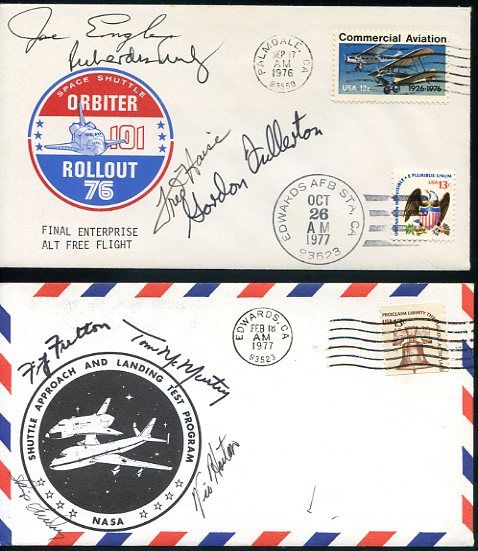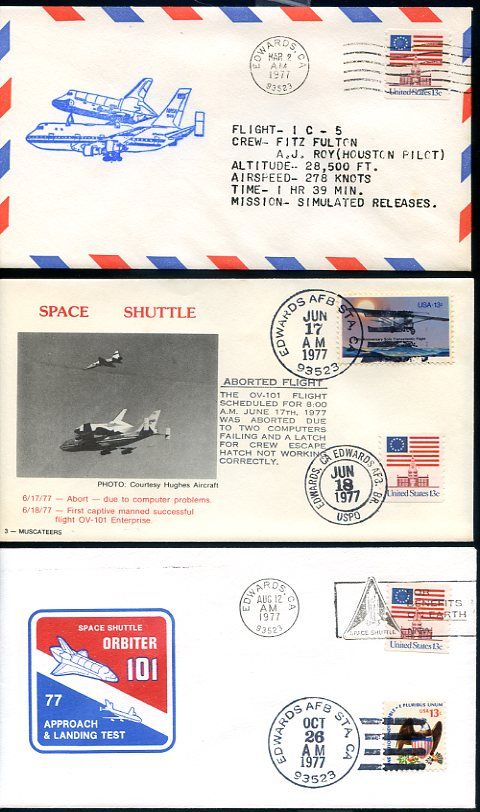Space Cover #180: The Space Shuttle's First Flights: Enterprise and the Approach and Landing Tests35 years ago, from February to October 1977, NASA's first space shuttle orbiter, OV-101 Enterprise, was involved in the Approach and Landing Test (ALT) Program at Edwards AFB, CA. ALT was designed to test the flight characteristics of the space shuttle orbiters, by simulating a typical approach and landing profile from orbit.
Enterprise was carried aloft a total of 13 times by a Boeing 747, the Shuttle Carrier Aircraft (SCA). The first five flights, from February 18 to March 2, 1977, were called Inactive Captive flights (Enterprise unmanned), then from June 18 to July 26, three more flights took place, called Active Captive, with Enterprise manned by a 2-man astronaut/pilot crew. And then on August 12, Enterprise was released from atop the SCA for its first of five free flights. Piloting Enterprise on its first, third and fifth free flights were Fred Haise and Gordon Fullerton. Joe Engle and Richard Truly piloted Enterprise on its second and fourth free flights. These five flights were the only time that Enterprise ever flew alone.
The top cover is a Rockwell Space Division Stamp Club cover for Enterprise's rollout from its assembly plant in Palmdale in September 1976. It is also canceled for its final free flight on October 26, 1977 and autographed by the four NASA astronaut pilots who comprised the two 2-man flight crews. the bottom NASA Exchange cover marks the first of five Inactive Captive flights and is autographed by the SCA crew, including SCA commander Fitz Fulton.

The top cover, autographed by the crew of Haise and Fullerton, marks Enterprise's first manned Active Captive flight. The bottom cover marks Enterprise's first of five free flights.

The top cover marks Enterprise's second free flight and is autographed by the crew of Joe Engle and Richard Truly. The bottom cover is canceled for the first ALT free flight and is autographed by the SCA crew and the four ALT Enterprise astronaut pilots.
Enterprise did its important part in paving the way for the later shuttle orbital flights and is now residing as a museum piece at the Intrepid Sea, Air and Space Museum in NYC.
















